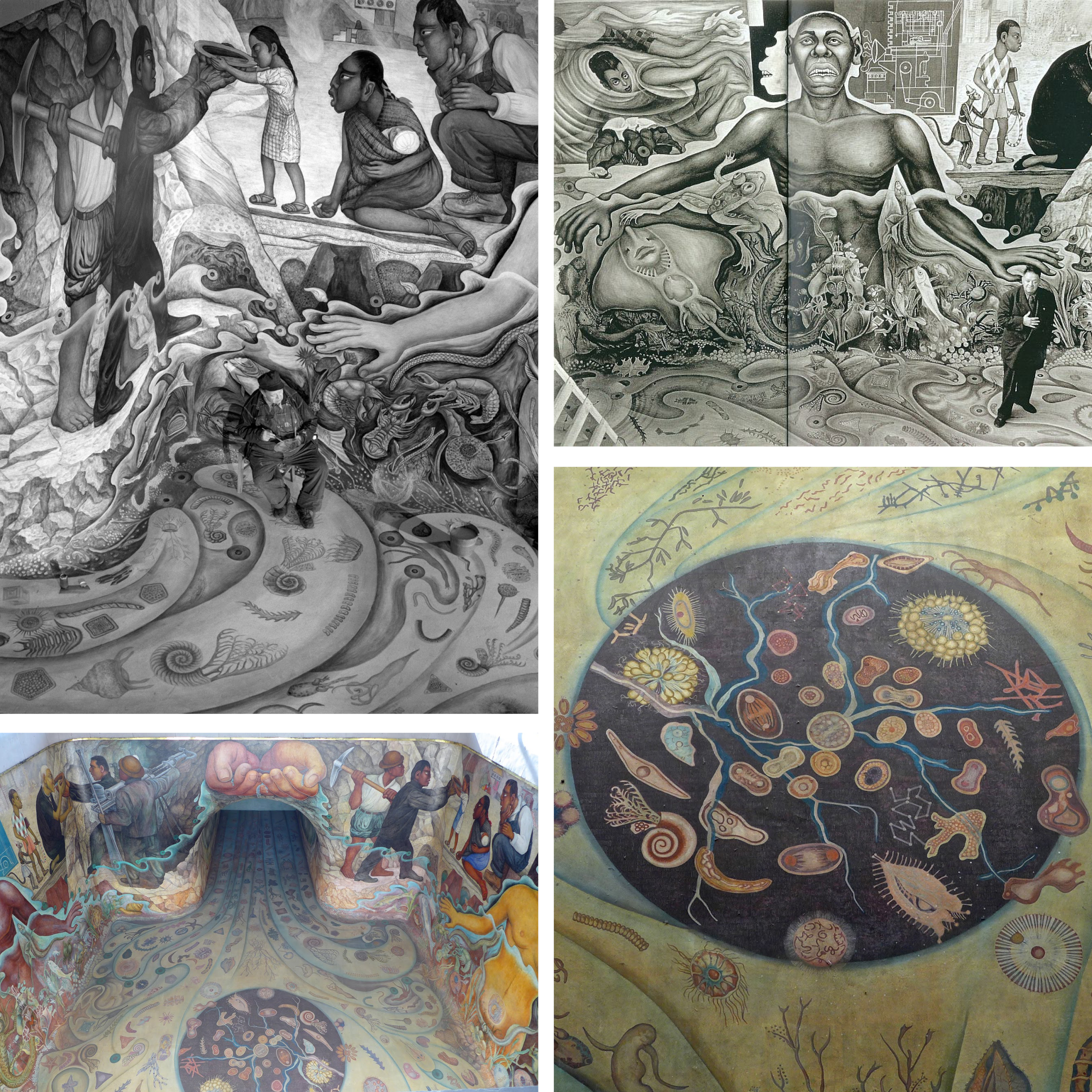
Allegory is a literary device used in numerous forms of art to reveal the hidden meaning of real-world issues and occurrences through a discreet curtain of a symbolic character, place or event.
The allegories of rivers have been in existence since the post-Hellenistic-Age Romans, who personified rivers as mythical figures capable of bringing life and prosperity and at times, capable of wreaking havoc through the power of floods. Romans personified rivers in their artworks as a bull or a man with a bullhead, similar to the Greek myth about the god of rivers- the Achelous, who was defeated by Hercules for the hand of the water nymph Deianeira. Hercules ripped off a horn of Achelous and offered it to Deianeira, who filled it with fruits calling it a 'cornucopia'- another river analogy that turns up repeatedly. Gradually, the rivers became symbolic as bearded reclining men and springs as standing female nymphs throughout the Roman era where long beards, flowing hair with reed crowns, and robes holding urns as origins of the river provided the perception of flowing water. The representation of major rivers - the Tiber, Nile, Euphrates, Tigris, Danube and Rhine - were commonly featured in artworks and coins. The famous painting 'The Four Continents', also known as 'The Four Rivers of Paradise', represents the female personifications of Europe, Asia, Africa and America sitting with the personifications of their respective major rivers – the Danube, the Ganges, the Nile and the Río de la Plata. Vienna's Danube is depicted in the column of Trajan in Rome as a personified male somberly looking over the Roman army as they cross the river. The sculptures in Vienna's water fountains are often personifications of its springs and rivers to celebrate water and its associated technology.
Another allegory of water as an originating element of life on earth and its abiogenesis is observed in 1951, in Rivera's mural of Cárcamo de Dolores. The mural inspired by the theories of Alexander Ivanovich Oparin, a Soviet biochemist, represents the origin of life through various organisms, first men inspired by Olmec art, the importance of workers and technology in providing water to the city, and its importance in daily lives.
← Back to Lexicon
The allegories of rivers have been in existence since the post-Hellenistic-Age Romans, who personified rivers as mythical figures capable of bringing life and prosperity and at times, capable of wreaking havoc through the power of floods. Romans personified rivers in their artworks as a bull or a man with a bullhead, similar to the Greek myth about the god of rivers- the Achelous, who was defeated by Hercules for the hand of the water nymph Deianeira. Hercules ripped off a horn of Achelous and offered it to Deianeira, who filled it with fruits calling it a 'cornucopia'- another river analogy that turns up repeatedly. Gradually, the rivers became symbolic as bearded reclining men and springs as standing female nymphs throughout the Roman era where long beards, flowing hair with reed crowns, and robes holding urns as origins of the river provided the perception of flowing water. The representation of major rivers - the Tiber, Nile, Euphrates, Tigris, Danube and Rhine - were commonly featured in artworks and coins. The famous painting 'The Four Continents', also known as 'The Four Rivers of Paradise', represents the female personifications of Europe, Asia, Africa and America sitting with the personifications of their respective major rivers – the Danube, the Ganges, the Nile and the Río de la Plata. Vienna's Danube is depicted in the column of Trajan in Rome as a personified male somberly looking over the Roman army as they cross the river. The sculptures in Vienna's water fountains are often personifications of its springs and rivers to celebrate water and its associated technology.
Another allegory of water as an originating element of life on earth and its abiogenesis is observed in 1951, in Rivera's mural of Cárcamo de Dolores. The mural inspired by the theories of Alexander Ivanovich Oparin, a Soviet biochemist, represents the origin of life through various organisms, first men inspired by Olmec art, the importance of workers and technology in providing water to the city, and its importance in daily lives.
← Back to Lexicon
Images of Diego Rivera’s mural ‘The Origin of Life’ for Cárcamo de Dolores.
Sources: “Cárcamo de Dolores”, Wikipedia, July 26, 2020, https://es.wikipedia.org/wiki/C%C3%A1rcamo_de_Dolores
Sources: “Cárcamo de Dolores”, Wikipedia, July 26, 2020, https://es.wikipedia.org/wiki/C%C3%A1rcamo_de_Dolores
- “Rivers of art: Ancient Rome”, River Ecology and Research, September 15, 2016, https://paulhumphriesriverecology.wordpress.com/2016/09/15/rivers-of-art-ancient-rome/
- “The Four Continents”, Wikipedia, March 25, 2021, https://en.wikipedia.org/wiki/The_Four_Continents
- “Departure across the Danube”, Omeka RSS, accessed May 03, 2021, http://omeka.wellesley.edu/piranesi-rome/exhibits/show/column-for-trajan/departure-across-the-danube
-
“Cárcamo de Dolores”, Wikipedia, July 26, 2020, https://es.wikipedia.org/wiki/C%C3%A1rcamo_de_Dolores
